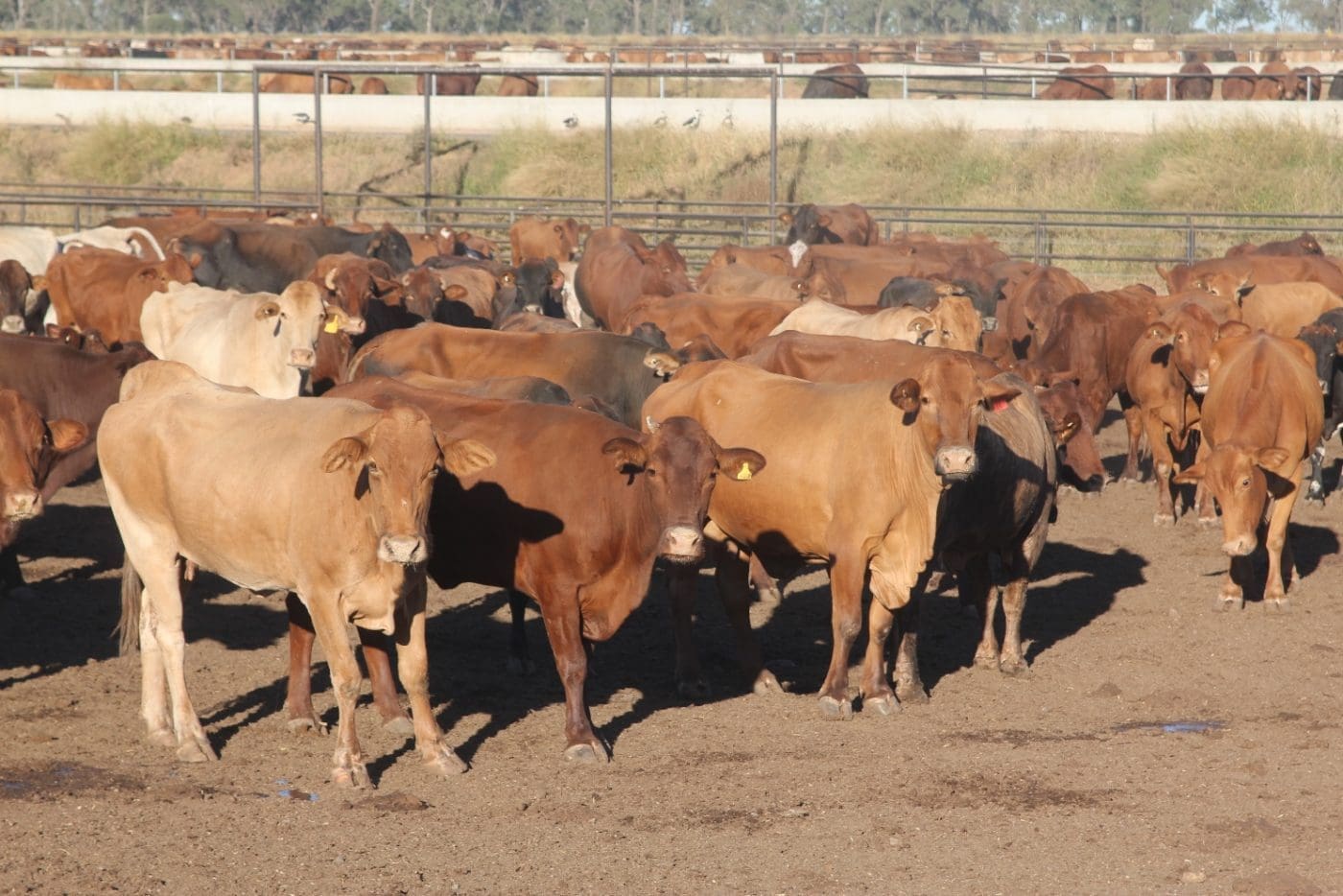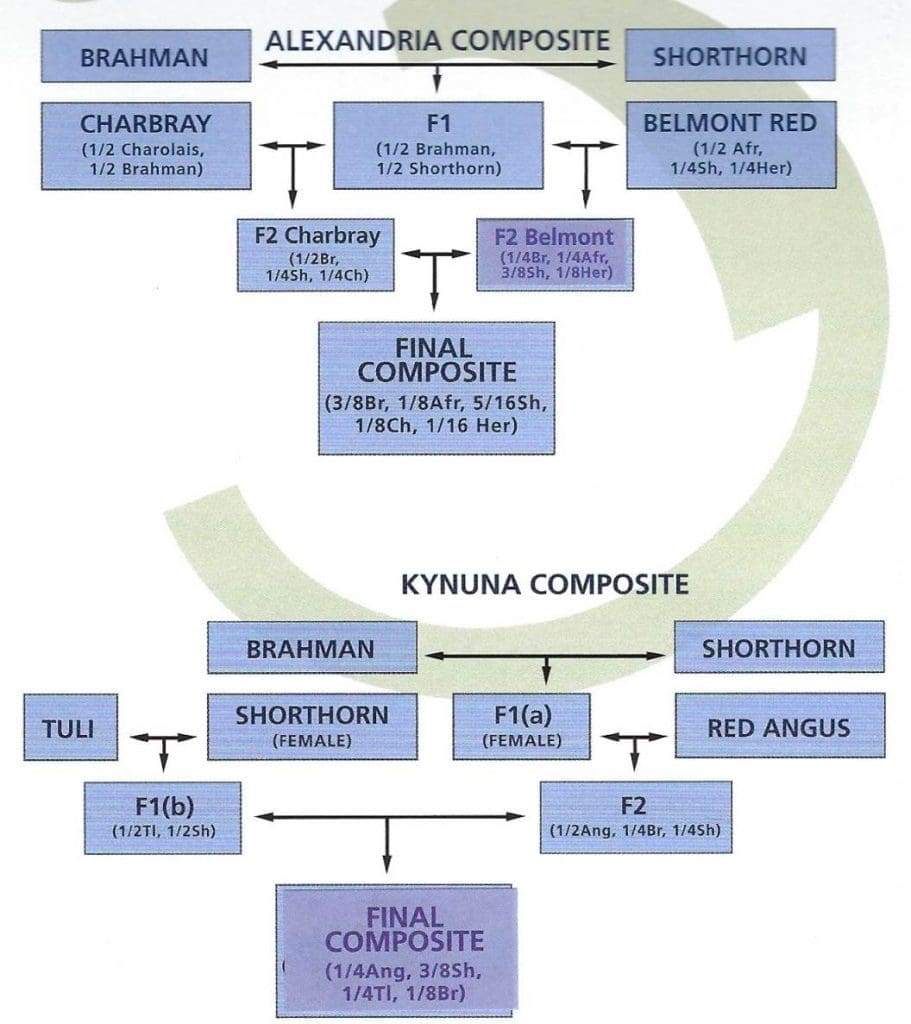AUSTRALIA’S large pastoral companies have initiated some impressive composite breeding programs over the last 30 years, with the goal of utilising complementarity in genetic traits and hybrid vigour (heterosis) to increase the productivity and meat quality of their traditionally purebred herds.
Some of these pastoral company composite programs have remained as originally established, while others have been modified by the introduction of new breeds or a change in direction due to shifting market requirements and other factors.
Complementarity is the utilisation of superior traits from different breeds. A good example is the superior meat quality of Taurus cattle combined with the heat tolerance and tick resistance of the Brahman breed. Infusion of the slick-coat gene from a tropically adapted Taurus breed such as the Senepol to improve heat tolerance is another example.
Heterosis, or hybrid vigour, is the increase in performance of the progeny over the average performance of the parents for that trait. Hybrid vigour is greatest for traits with low heritability such as fertility or longevity, and is also greater when genetically diverse breeds are crossed such as a Bos Taurus (eg British breed) with a Bos Indicus (eg Brahman).
Composite breeding aims to capture the complementary advantages of different breeds while maintaining as much heterosis as possible. The more breeds that are used in a composite, the greater the proportion of the initial heterosis is retained in subsequent generations.
The North Australian Pastoral Co is recognised as the original pioneer of composite breeding among the nation’s large pastoral companies.

NAPCo composite cull cows being fed for slaughter
NAPCo today runs 200,000 cattle across 14 properties in northern Queensland and the Northern Territory.
Planning for the composite program started around 1982, with Brahman bulls introduced over the original Shorthorn cows. The first Brahman cross F1 generation hit the ground in 1984.
In 1986, the company started developing a self-perpetuating composite to balance tropical adaptation, fertility and meat quality traits, while retaining hybrid vigour. What resulted was the Alexandria composite, comprising 5/16 Shorthorn, 3/8 Brahman, 1/8 Africander, 1/8 Charolais and 1/16 Hereford.
According to the company history, “NAPCo: The first 125 years,” by mid-1992, the fertility impact of the composite was in clear evidence, with company branding percentages significantly ahead of other northern producers operating under similar conditions.
In the mid-1990s, with eating quality becoming more important, NAPCo developed a second composite which was designed to combine tropical adaptability, fertility and growth with superior meat quality traits. The resultant Kynuna composite carries 1/8 Brahman, 3/8 Shorthorn, ¼ Tuli and ¼ Red Angus (see illustration).
Kynuna composite sires are joined to Alexandria composite females to produce progeny that retain the desired traits of both composites. The terminal progeny carry 9/16 Bos Taurus (British/Continental), ¼ Bos Indicus and 3/16 Bos Taurus (Sanga) genetics.
In what is claimed to be the world’s largest composite breeding program, NAPCo now has a closed herd with a wide genetically-diversified base. It has been estimated that 87 percent of the potential heterosis is maintained in the stabilised composite herds.
While the development of the company’s composite programs was complex and took considerable time, NAPCo has demonstrated that there is substantial room to boost meat quality in tropical cattle once the key traits of fertility and environmental adaptation have been assured. Showing the detail of the project, the original production plan for NAPCo’s composite breeding project was mapped out as far ahead as 2007 – some 20 years after it started.

Phil Cummins
NAPCo chief executive officer Phillip Cummins said the three breeding objectives in 1986 were improved reproductive performance (a significant challenge in extensive northern breeding herds), improved growth and improved meat quality – and these objectives had remained constant since then.
“The breeding program has enabled these objectives to be achieved,” he said.
“Independent research by Australian scientists reported that NAPCo herd fertility was a benchmark for the north Australian beef industry. The mix of breeds in our composites has produced animals that are suitable for their environment, and produce high quality beef that consistently performs well under MSA grading and for export markets,” Mr Cummins said.
“The NAPCo composites have been stabilised breeds for many years, so management of the breeding herds is no more difficult than managing a straight-bred breeding program.”
NAPCo operates a bull-breeding herd for each composite program, with each stud comprising 4000 cows. Within that are three top stud herds, and a multiplier herd.
“This structure allows us to identify the elite genetics for replacement bulls and heifers and avoid any risk of inbreeding,” Mr Cummins said.
The bull breeding herds are rigorously performance recorded including measurements of feed efficiency, meat quality traits and carcase yield, and each calf is genomically tested. A Breedplan genetic analysis of all of the data including the genotypes is conducted on a regular basis at the University of New England to identify the best commercial animals for fertility, growth and meat quality, he said.
The NAPCo program is a vertically integrated to the point of slaughter utilising breeding properties, backgrounding properties and the 14,000 head Wainui feedlot near Dalby, on Queensland’s Darling Downs. Turnoff is predominantly grain-finished, subject to seasonal conditions. All cattle are processed in Australia.
Major customers include Woolworths, for which NAPCo holds a supply contract for 70-day grainfed yearling cattle, both steers and heifers; and JBS for export weight cattle. The company is also embarking on a branded beef program to commence soon, Mr Cummins said.
When asked about the future direction of the breeding program, Mr Cummins said NAPCo had been breeding cattle for 140 years, so the approach was simple and practical: select cattle that perform in the paddock and produce high quality meat.
“Staying abreast of developments in technology (such as genomics) and using these to inform our breeding decisions, is how we will continue to improve the herd,” he said.
- Next week’s genetics review will look at the composite breeding programs being utilised by some of the other large northern pastoral companies.


Brilliant article that can be directly utilised in Senior Agricultural Science curriculum applications.
Composite breeding can be as good or bad as the genetics selected for the composite…..as well as the selection system used. Matching genetics to environment often requires composite breeding. Breed complementarity is of greater importance than hybrid vigor.